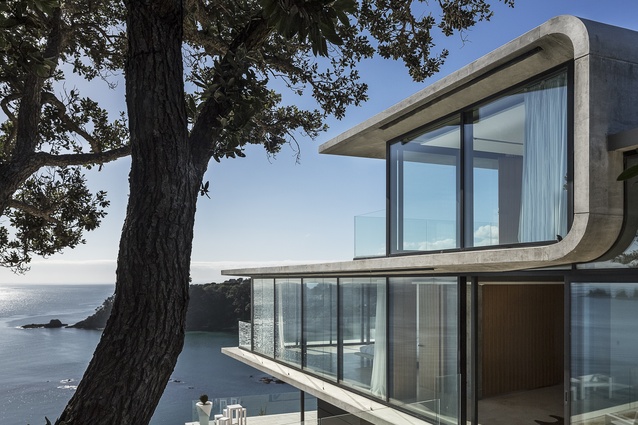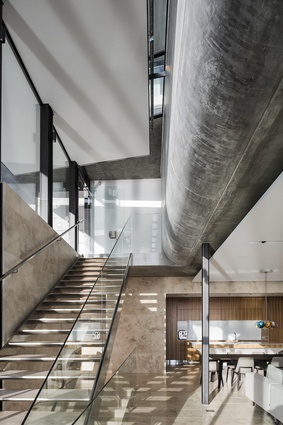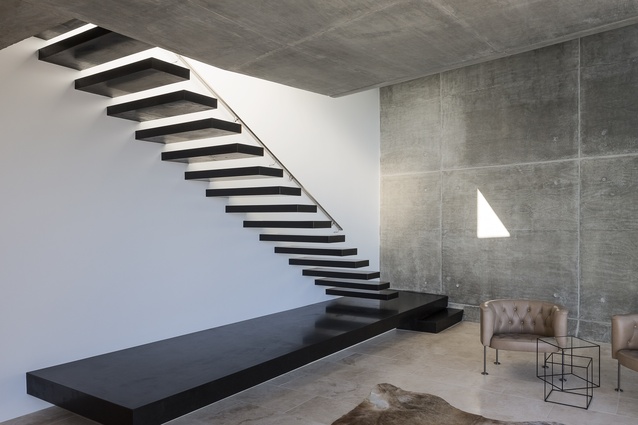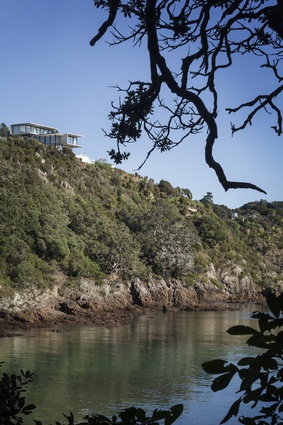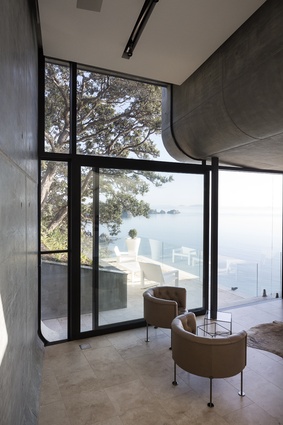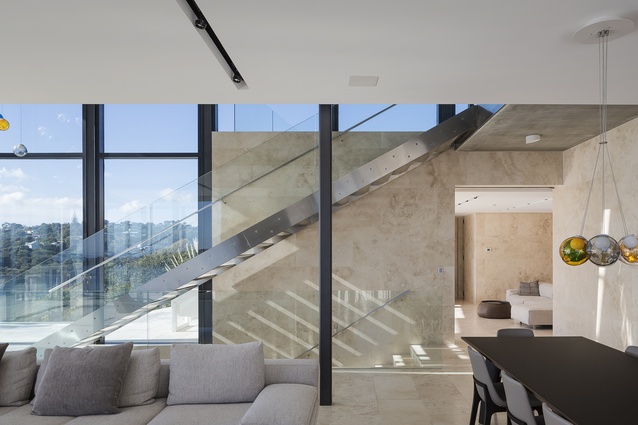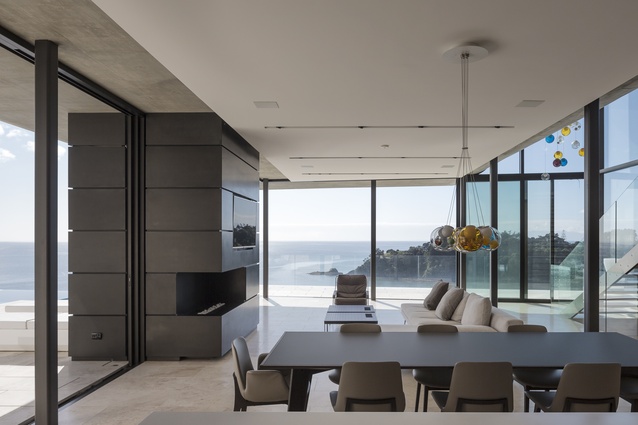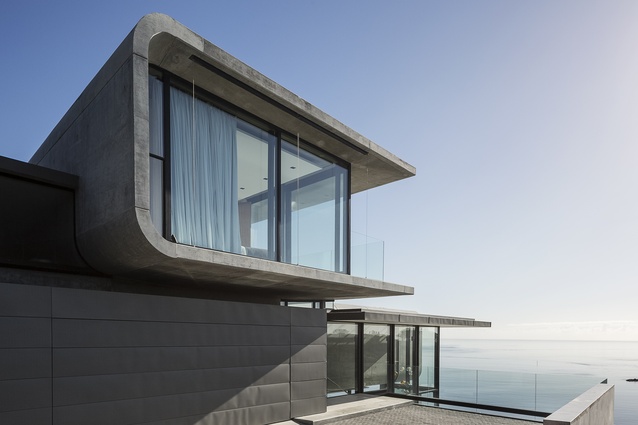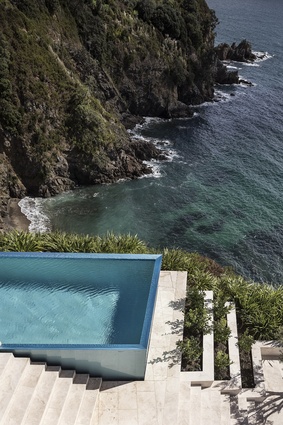Hilltop stage
Theatricality, robustness and confident pride of place make this Waiheke home a true head-turner.
The Hekerua Bay Residence, designed by Lindsay Mackie of Auckland practice Archimedia, is one heroic house – or should that be virile villa? Cupped in concrete and lined with travertine, the building is a series of platforms that command a Waiheke promontory with provocative assurance.
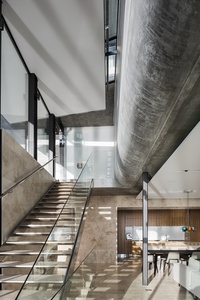
This is not a house that treads lightly; it doesn’t equivocate about being a building in a landscape. For these reasons it is challenging: its design and construction could be construed as an act of architectural apostasy. The house might even be described as politically incorrect.
It hits another nerve, too. Although New Zealanders are as enthralled with the same trashy diversions as everyone else – celebrity gossip, social media sensationalism, online prurience – there’s still a strong strain of prudishness in our society. The Hekerua Bay Residence is confronting not just because it is unapologetically prominent, but because it’s sexy.
Inside the house, you are in the realm of the senses. The in-situ concrete and sandstone-coloured travertine are smooth and cool and inviting to the touch; the sun pours in its warmth; the sea below and the sky above are just about all you can see; there’s no noise to hear except the sounds you choose to make. If the building suggests other buildings it’s the elevated and cinematic ‘total concept’ houses designed by John Lautner in mid-century Los Angeles.
There’s no clutter in the house. The materials, the prospect, the calmness, and the general above-it-allness of the house is positively Olympian. You could imagine a few of the gods, the old gods, that is, gathering on the terrace to decide the fate of their favourite Greek or Trojan warriors. Like those heroes, this house is in it for the glory: it is the bold realisation of a single-minded purpose.
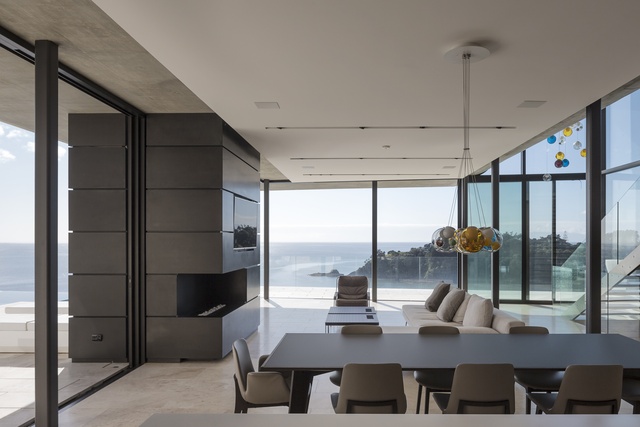
The single-line brief from the client, Mackie says, was an instruction to enhance the experience of occupation. Or words to that effect; I suspect the client may have communicated a desire for a sensuous house, only because that is what he has got, and he seems to be a man who gets what he wants.
“This was always going to be a masonry house,” says Mackie. Identity is something that Archimedia takes very seriously. The firm wants its buildings to have a “material identity”, which seems to mean expressing identity materially.
On several counts, the Hekerua Bay Residence passes the identity test. The client was born and raised in Cyprus, and is naturally drawn to the Mediterranean’s masonry tradition and legacy of island hilltop construction, and the bleached palette of an antique land. Moreover, the client is an engineer by profession and a builder by practice; he likes concrete, and has a workforce experienced in its in-situ use.
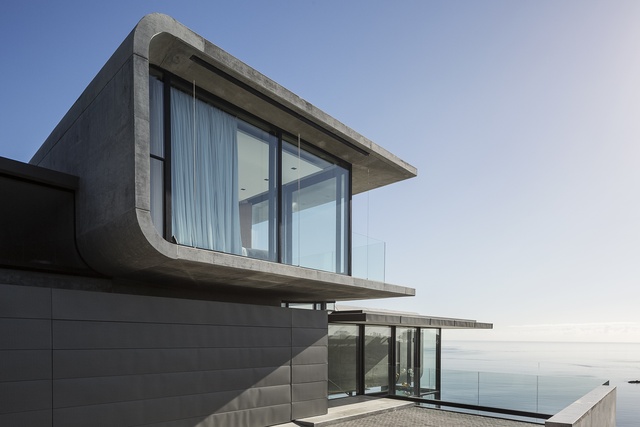
The architect says the house’s identity has been indigenised by its materials. The travertine is a colour match to the sand on the beach across the bay from the house and the cliffs that define the Waiheke coastline. Concrete is also a localising influence, Mackie says. He cites as a reference the concrete gun emplacements dotted around the shoreline of the Hauraki Gulf.
Auckland’s guns, installed to repel the Russians in the late 19th century and the Japanese in the 1940s, never fired a shot in anger, but they have performed sterling service to the local architectural canon in supplying ammunition to those making the case for constructional permanence. Many of the old gun sites necessarily enjoy a fine outlook, which is another handy precedent for the designers of prominent view houses.
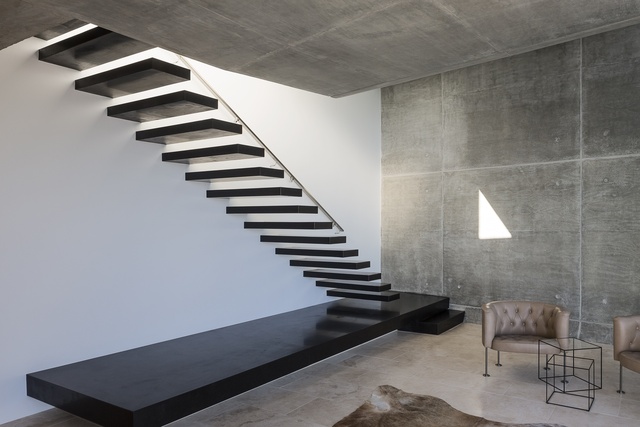
Like the house at Hekerua Bay, the Hauraki gun emplacements are partly embedded in the landscape and partly poke out from it. None of the little forts, however, have the pronounced cantilever of the house. The house looks like it’s on the verge of a leap, or perhaps, to judge from the swivel and stretch of its upper levels, it’s already engaged in a forward dive, with twist.
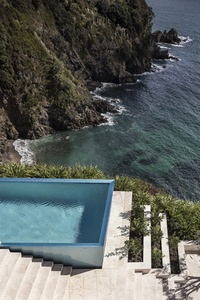
In the descent to the house a visitor gets a strong sense of the house’s dynamic relationship with its site and its commitment to its prospect. The approach is a choreographed rejection of neighbouring suburbia and a staged delivery of the vista.
The architect talks about the performance of the house: the flat temperature curve generated by the thermal mass of in-situ panels with insulation sandwiched between two layers of concrete, and travertine floors; by large areas of sun-admitting glazing and sun-denying overhangs; by the expulsion of warm air in hot months.
The house does its environmental bit, ‘harvesting’ its own potable water, and dealing with waste water on site. All true, no doubt, but it’s the performativity of the house as much as its constructional virtuosity that sets it apart. It’s a stage, and, says its architect, “it’s when it’s all opened up that it really sings”.
Excerpted from City House, Country House (Godwit – Penguin Random House), 2016, by John Walsh and Patrick Reynolds. RRP $85. For an interview with the authors, see here.

